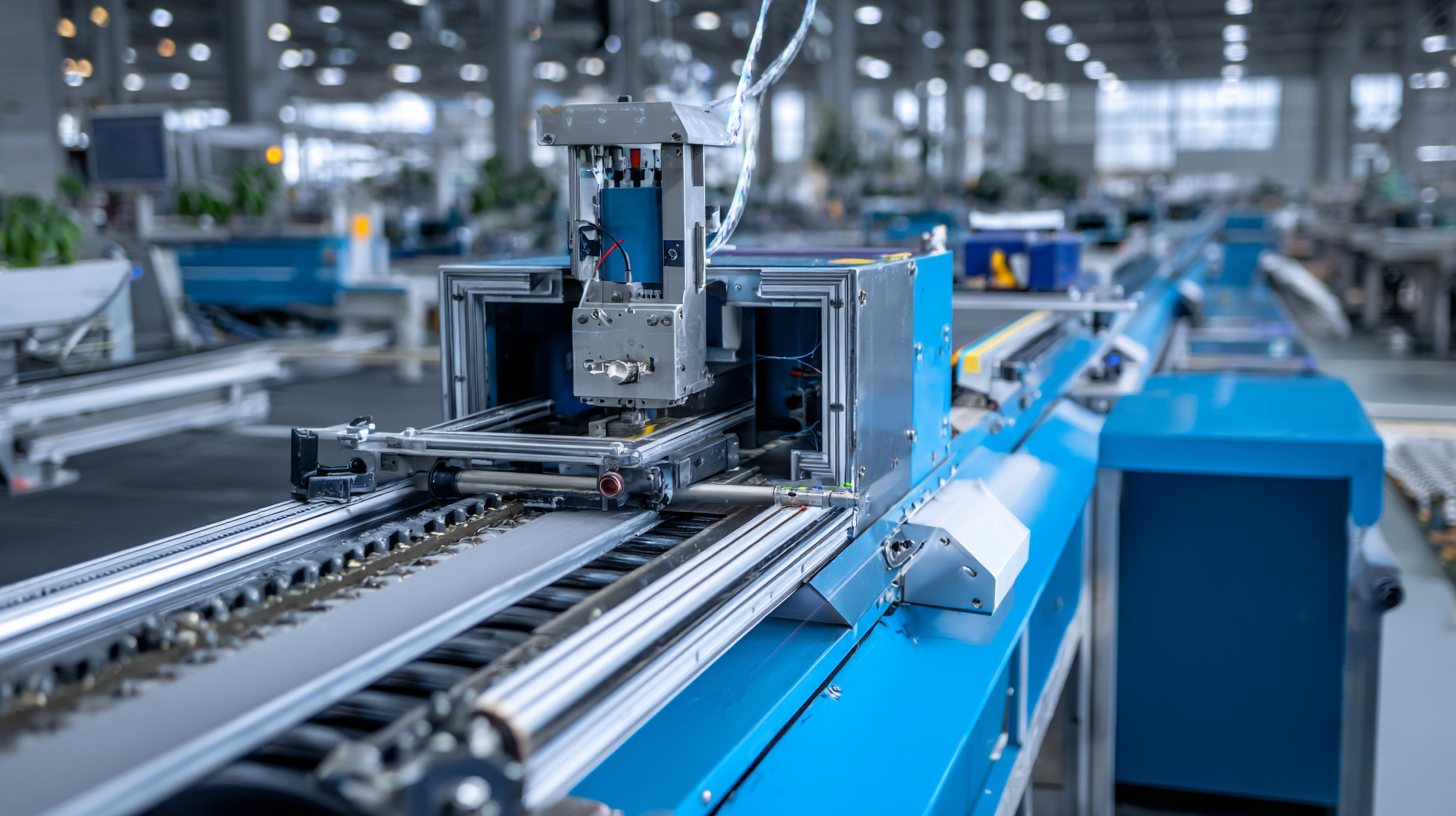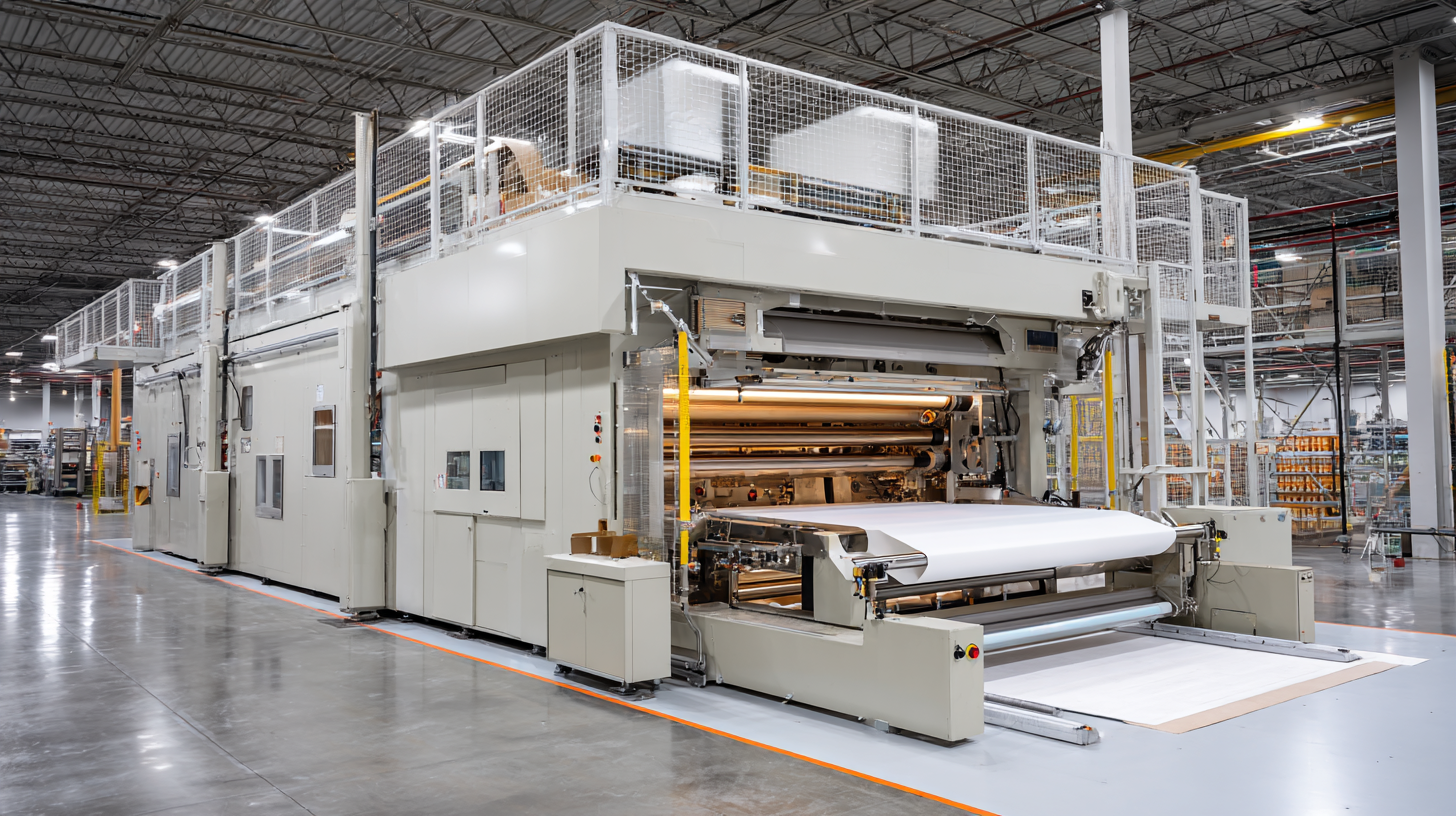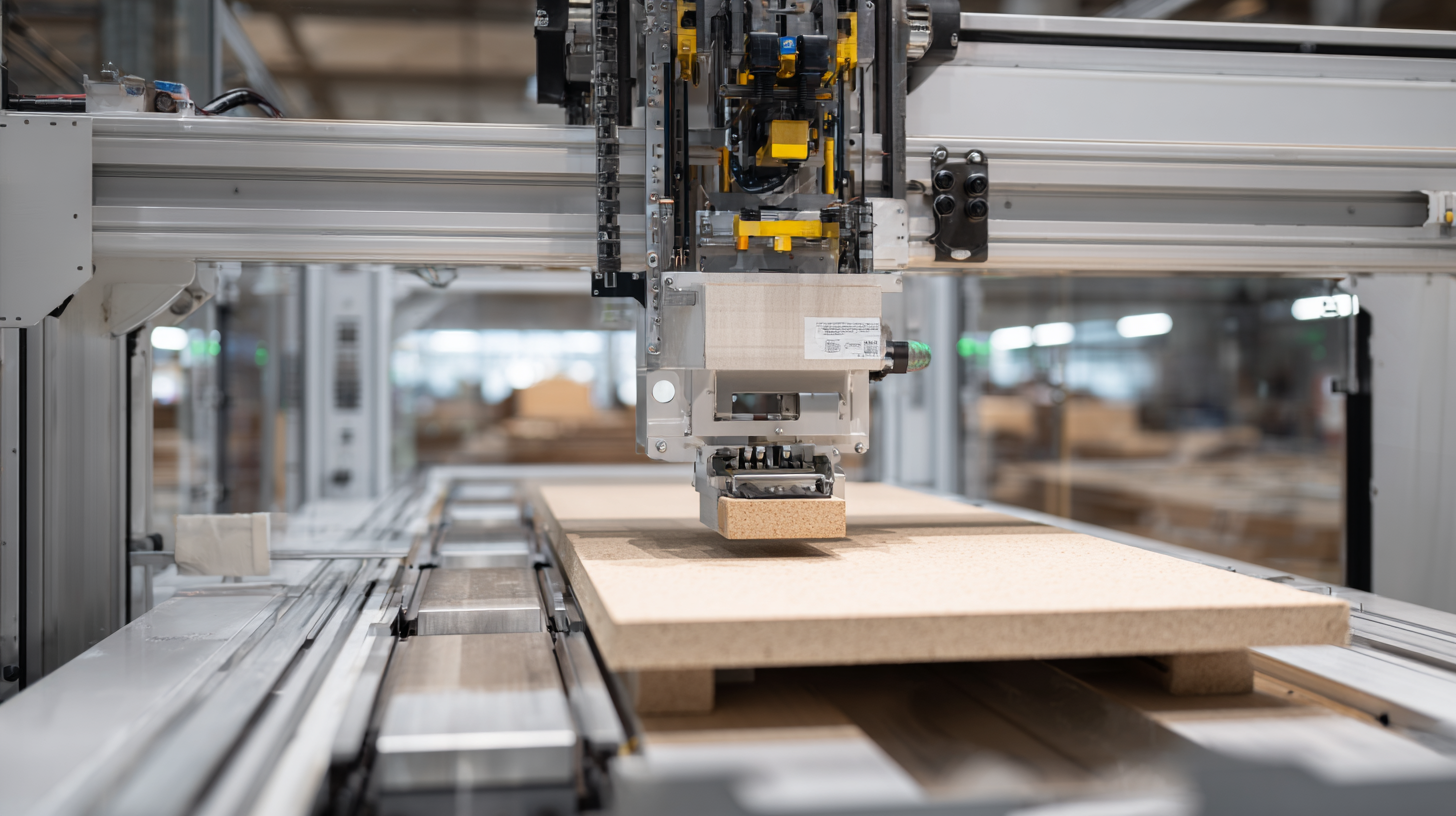7 Reasons Door Hanging Machines Boost Manufacturing Efficiency by 25 Percent
 In today's fast-paced manufacturing environment, the quest for enhanced efficiency is paramount for businesses seeking to maintain a competitive edge. Recent industry reports highlight that manufacturers leveraging advanced technologies can boost productivity by up to 25%. One notable innovation making waves in this realm is the Door Hanging Machine, a tool designed to streamline the assembly process of doors in production lines.
According to a study by the National Institute of Standards and Technology, automating repetitive tasks not only reduces labor costs but also minimizes errors, leading to improved quality control. The Door Hanging Machine exemplifies this transition, enabling manufacturers to optimize their workflows while adhering to rising consumer demands for speed and precision.
By integrating such machines into their operations, companies can not only achieve significant time savings but also enhance overall output, marking a pivotal shift in the manufacturing landscape.
In today's fast-paced manufacturing environment, the quest for enhanced efficiency is paramount for businesses seeking to maintain a competitive edge. Recent industry reports highlight that manufacturers leveraging advanced technologies can boost productivity by up to 25%. One notable innovation making waves in this realm is the Door Hanging Machine, a tool designed to streamline the assembly process of doors in production lines.
According to a study by the National Institute of Standards and Technology, automating repetitive tasks not only reduces labor costs but also minimizes errors, leading to improved quality control. The Door Hanging Machine exemplifies this transition, enabling manufacturers to optimize their workflows while adhering to rising consumer demands for speed and precision.
By integrating such machines into their operations, companies can not only achieve significant time savings but also enhance overall output, marking a pivotal shift in the manufacturing landscape.
The Impact of Door Hanging Machines on Production Workflow
The implementation of door hanging machines significantly enhances production workflow by streamlining various stages of the manufacturing process. These machines automate the assembly of doors, eliminating manual handling and minimizing the time required for each unit. As a result, manufacturers experience faster turnaround times, allowing them to meet increasing market demands without sacrificing quality.
To maximize the benefits of door hanging machines, manufacturers should consider regular maintenance to ensure optimal performance. Keeping machinery in top condition helps avoid unexpected downtimes that can disrupt workflow. Additionally, training staff on the efficient use of these machines can further increase productivity, enabling workers to become adept at navigating the technology quickly.
Integrating door hanging machines into the production line also facilitates better inventory management. By accurately tracking the number of doors produced, manufacturers can align their supply chains more effectively, reducing excess stock and ensuring that the right materials are available when needed. This synergy not only accelerates the production cycle but also contributes to overall cost savings, making it a win-win for businesses aiming to boost efficiency.
Enhancing Precision: How Automation Improves Consistency in Manufacturing
The integration of automation in manufacturing has significantly enhanced precision and consistency, a trend evident across various sectors. One notable aspect is the use of door hanging machines, which reportedly boosts manufacturing efficiency by 25%. This leap in efficiency can be attributed to automated processes that ensure accurate measurements, reduce human error, and maintain uniform quality. The ongoing expansion of the industrial robotics market, projected to surge from USD 55.1 billion by 2025 to USD 291.1 billion by 2035, indicates that the industry is embracing technologies that not only improve productivity but also redefine precision in manufacturing.
Tips for enhancing precision through automation include investing in advanced robotic systems, which are transforming processes such as sheet metal bending and apparel production. These technologies enable manufacturers to achieve unprecedented levels of accuracy and efficiency. Furthermore, the incorporation of artificial intelligence into CNC machining systems can greatly affect precision manufacturing by implementing predictive maintenance and adaptive machining, thereby minimizing downtime and ensuring high-quality output.
Another strategy involves leveraging machine learning and artificial intelligence to enhance supply chain management. By applying these technologies, companies can optimize production schedules, improve inventory control, and refine supplier selection, all contributing to smoother operations and enhanced overall efficiency. As automation continues to evolve, manufacturers that prioritize precision will be well-positioned to excel in a competitive landscape.
7 Reasons Door Hanging Machines Boost Manufacturing Efficiency by 25 Percent - Enhancing Precision: How Automation Improves Consistency in Manufacturing
| Reason | Impact on Efficiency (%) | Description |
|---|---|---|
| Increased Speed | 15 | Automated systems operate faster than manual labor. |
| Reduced Errors | 10 | Precision automation minimizes human error in production. |
| Lower Waste | 5 | Efficient processing reduces material waste significantly. |
| Consistent Quality | 8 | Automation ensures uniformity of products across batches. |
| Enhanced Safety | 7 | Machines reduce worker exposure to hazardous tasks. |
| Scalability | 4 | Automation allows easy scaling of production as demand grows. |
| Reduced Labor Costs | 6 | Fewer workers are required for tasks that machines can perform. |
Reducing Labor Costs: The Financial Benefits of Using Door Hanging Machines
As manufacturing continues to evolve, the integration of advanced machinery is proving essential for enhancing efficiency. Door hanging machines have emerged as a game-changer in this regard, particularly in reducing labor costs. By automating the door hanging process, manufacturers can significantly minimize the number of manual labor hours required, resulting in direct cost savings. This automation not only streamlines the workflow but also allows staff to focus on higher-value tasks, ultimately boosting productivity.
Moreover, the reduction in labor costs isn't the only financial benefit associated with door hanging machines. With improved accuracy and speed, these machines help lower material waste caused by human error. This precision leads to a more efficient use of resources, ensuring that every component is utilized effectively and economically. As a result, companies can achieve better profit margins without compromising on quality, making door hanging machines an indispensable tool for modern manufacturing operations aiming to elevate their bottom line.
Maximizing Space: Efficient Layouts Enabled by Automated Door Handling
Automated door handling systems are transforming the manufacturing landscape by optimizing floor space and improving overall efficiency. According to a report by the National Association of Manufacturers, manufacturers that have implemented automation technologies have seen productivity increases up to 25%. This is particularly relevant in industries where efficient space management is critical. Automated door hanging machines streamline the process of moving products through different stages of manufacturing, minimizing the time and labor involved, while also utilizing vertical space that is often underutilized.
Efficient layouts enabled by these automated systems allow manufacturers to configure their facilities in ways that reduce bottlenecks and enhance workflow. A study by the Lean Enterprise Institute indicates that reorganizing manufacturing layouts can lead to a 30% decrease in movement waste. By automating door handling, manufacturers can allocate resources more strategically, allowing for collaborative spaces that boost team productivity. The integration of such machines not only contributes to a cleaner and safer working environment but also supports the scalability of operations, making it easier to adapt to market demands while maximizing existing space.

Boosting Output: The Role of Technology in Meeting High Demand Situations
In today's fast-paced manufacturing landscape, technology plays a pivotal role in optimizing efficiency and meeting market demands. The integration of
advanced door hanging machines is one such innovation that has shown to significantly enhance production output by up to 25%. According to a recent report by the Manufacturing Institute, the adoption of automation tools can improve production rates by as much as 30%, underscoring the critical importance of staying ahead in a competitive environment.
Moreover, businesses face increasing pressure to streamline operations and boost capacity without compromising quality. Industry data from the National Association of Manufacturers highlights that over 70% of manufacturers are investing in technology to improve production lines. By automating repetitive tasks and minimizing human error, door hanging machines not only support higher throughput but also enhance product consistency. This technological shift allows manufacturers to rapidly adapt to high demand situations, ensuring that they can provide timely deliveries and meet customer expectations seamlessly.

